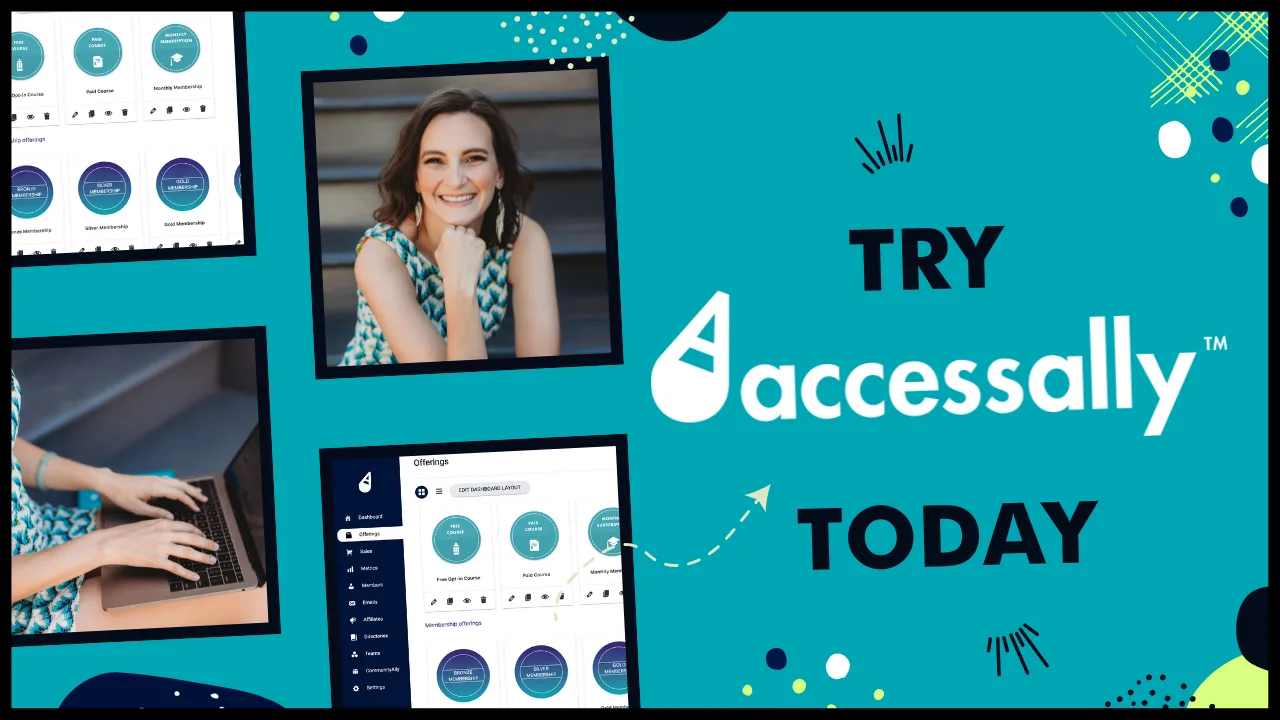Introduction and Overview: The Course Completion Challenge
Let’s face it – watching your course completion rates hover in the single digits can be disheartening, especially after pouring your heart and expertise into creating valuable content. While the average online course completion rate sits around 15%, there’s so much potential to dramatically improve these numbers with the right approach.
When done right, your course can achieve completion rates of 60% or higher, leading to better student outcomes, more powerful testimonials, and a stronger reputation in your industry. The key lies in understanding why students drop off and implementing proven systems to keep them engaged.
As someone who has helped hundreds of course creators optimize their programs, I’ve noticed that completion rates aren’t just about content quality – they’re about the entire student experience. From the moment someone enrolls to their final celebration, every touchpoint matters in keeping them motivated and moving forward.
Think of your course like a journey where you’re the expert guide. Your students arrive with high hopes and determination, but they’ll encounter obstacles along the way. Your role is to anticipate these challenges and build support systems that help them persist. This might mean incorporating progress tracking, celebrating small wins, or creating accountability partnerships.
In this comprehensive guide, we’ll explore practical strategies that have helped my clients achieve impressive completion rates while maintaining the integrity of their course material. We’ll look at everything from course structure and content delivery to student engagement tactics and community building.
The good news is that you don’t need to completely overhaul your course to see improvements. Often, small but strategic adjustments can make a significant difference in how students interact with and complete your material. Let’s dive into the specific approaches that can transform your completion rates and student success stories.
Foundation Concepts and Planning
Before diving into specific tactics, let’s explore the core principles that drive successful course completion rates. When done right, your foundation-setting work dramatically increases the likelihood that students will reach the finish line.
Start by understanding that course completion isn’t just about willpower – it’s about designing an experience that naturally pulls students forward. Think of your course like a well-crafted story, with each module building anticipation for what comes next. Your students need to feel a clear sense of progress and achievement throughout their journey.
The first crucial step is mapping out your student’s transformation journey. What specific pain points are they experiencing now, and what tangible results will they achieve by completing your course? This clarity helps you design content that directly connects to their motivations. For example, if you’re teaching social media marketing, each module should visibly move them closer to their goal of landing their first client or growing their following.
Consider implementing a pre-course orientation module that sets proper expectations and builds excitement. This is your opportunity to help students envision their success and understand exactly how your course will get them there. Share examples of past student wins, outline the time commitment needed, and provide a clear roadmap of the journey ahead.


Increasing course completion rates with proven strategies – Professional course creation with AccessAlly
Structure your content in digestible chunks that respect your students’ busy lives. While it might be tempting to pack everything you know into lengthy lessons, shorter, focused modules often lead to better completion rates. Aim for lessons that can be completed in 15-30 minutes, making it easier for students to maintain momentum even with limited time.
Pay special attention to your early modules – these set the tone for the entire course experience. Create quick wins that build confidence and demonstrate immediate value. For instance, if you’re teaching photography, have students capture and edit one striking photo in the first lesson rather than spending hours on technical theory.
Remember that course completion isn’t just about finishing – it’s about transformation. Build reflection points into your curriculum where students can acknowledge their progress and connect their learning to real-world applications. This helps maintain motivation and makes the course feel more personally relevant.
By thoughtfully laying this foundation, you’re creating an environment where completion feels natural and achievable, rather than a constant uphill battle.
Step-by-Step Implementation Guide
Let’s break down exactly how to put these completion-boosting strategies into action for your online course. When done right, these steps create a supportive environment that naturally encourages students to progress through your material.
Start by conducting a thorough course audit. Review your current completion rates and identify where most students tend to drop off. This data will be invaluable as you implement improvements. Pay special attention to the first module, as this often sets the tone for the entire learning experience.
Next, restructure your content into smaller, more digestible segments. Instead of hour-long videos, break them down into 5-10 minute chunks. Each segment should focus on one clear learning objective. Create natural stopping points that give students a sense of accomplishment, making it easier for them to return and continue learning.
Implement a robust onboarding sequence that begins immediately after purchase. Send a welcome email that includes first-step instructions, login details, and a quick win activity they can complete in under 15 minutes. This early momentum is crucial for long-term engagement.
Set up an automated progress tracking system in your course platform. Configure it to send encouraging notifications when students complete modules and gentle reminders when they’ve been inactive for a week. Personalize these messages to maintain a supportive tone rather than creating pressure.
Develop a community engagement strategy that connects students with each other. Create discussion prompts for each module and encourage students to share their progress. Consider implementing a buddy system where students can partner up and hold each other accountable.
Build in regular celebration points throughout your course. These can be as simple as digital badges for milestone achievements or as elaborate as featuring student success stories in your community. Recognition motivates continued participation and creates social proof for other students.
Establish a feedback loop by scheduling check-ins at key points in your course. Use surveys or one-on-one calls to understand what’s working and what isn’t. Pay attention to both struggling students and those who are succeeding – both groups offer valuable insights for improvement.
Create a clear path for students who fall behind. Develop a “catch-up plan” template they can use to get back on track without feeling overwhelmed. Include specific steps and modified timelines that make returning to the course feel manageable.
Finally, implement a completion celebration strategy. Design a meaningful way to acknowledge students who finish your course. This could include a virtual graduation ceremony, a physical certificate, or exclusive access to additional resources. Make course completion feel like a significant achievement worth pursuing.


Remember that increasing completion rates is an ongoing process. Monitor your metrics, gather student feedback, and continuously refine your approach. Focus on creating an environment where students feel supported and capable of success, and you’ll naturally see more of them crossing the finish line.
Advanced Strategies and Techniques for Course Completion
Let’s dive into some sophisticated approaches that can dramatically improve your course completion rates. When done right, these advanced techniques can transform a struggling program into a highly engaging learning experience.
First, consider implementing a dynamic progress tracking system that adapts to individual learning paths. Rather than using a simple progress bar, create milestone celebrations that trigger personalized congratulatory emails or unlock special bonus content. This creates multiple “mini-wins” throughout the course, keeping students motivated even during challenging sections.
Behavioral psychology plays a crucial role in advanced course design. Consider implementing a “commitment contract” at the start of your course, where students publicly declare their goals and timeline. Research shows that people are more likely to follow through when they’ve made a formal commitment, especially when shared with peers.
Social learning elements can significantly boost completion rates when strategically implemented. Create structured peer accountability groups of 3-4 students, carefully matching them based on time zones and learning pace. These “success pods” can meet virtually every two weeks to discuss challenges and share wins, creating a support system that extends beyond your direct involvement.
Another powerful technique is implementing adaptive learning paths. Instead of forcing all students through identical content, use preliminary assessments to customize their journey. For example, advanced students might skip foundational modules, while beginners receive extra support resources. This personalization helps prevent both overwhelm and boredom – two common reasons for course abandonment.
Consider thoughtfully incorporating gamification elements. Rather than basic point systems, design challenge-based learning scenarios that mirror real-world applications of your course material. Create optional “side quests” for students who want to dive deeper into specific topics, making the learning experience more engaging without overwhelming those who prefer a straightforward path.
Leverage technology to identify struggling students before they drop out. Set up automated check-ins when students show signs of disengagement, such as missing two consecutive assignments. These timely interventions can include personalized video messages, offering additional support resources, or scheduling one-on-one office hours.
Remember to regularly analyze your completion data to refine these strategies. Pay special attention to where students typically disengage and experiment with different support mechanisms at these critical points. Your course should evolve based on real student behavior and feedback, creating an increasingly effective learning environment over time.
Common Challenges and Solutions
Let’s address the roadblocks that often prevent students from reaching the finish line, along with practical solutions you can implement today. One of the biggest hurdles course creators face is maintaining student momentum throughout the learning journey.
When students first enroll, they’re typically buzzing with excitement and motivation. Unfortunately, many creators don’t realize that this initial enthusiasm naturally wanes around the third or fourth module. To combat this, consider implementing a progress tracking system that celebrates small wins. Something as simple as completion certificates for each module can provide that extra push students need to keep going.
Technical overwhelm is another common challenge that silently kills completion rates. Students might struggle with your course platform, feel lost in the material, or get stuck on specific lessons without speaking up. The solution? Create a thorough onboarding sequence that walks students through your course environment, and establish clear support channels they can easily access when needed.
Information overload can paralyze your students’ progress. If you’re feeling tempted to pack every module with extensive content, remember that clarity trumps comprehension. Break down complex topics into digestible chunks, and provide action steps at the end of each lesson. This approach helps students implement what they’ve learned before moving forward.
Time management struggles often derail even the most committed students. Consider offering multiple learning paths – an accelerated track for those who want quick wins, and a more detailed journey for those who prefer comprehensive learning. Provide estimated completion times for each lesson and suggest optimal study schedules that students can adapt to their lives.
Lastly, isolation can significantly impact completion rates in online courses. Foster a sense of community by creating accountability partnerships or small study groups. Regular live Q&A sessions can also help students feel connected and supported throughout their learning journey. Remember to check in with inactive students personally – sometimes a simple “How can I help?” message can reignite their motivation to continue.
Best Practices and Optimization
When it comes to optimizing your online course for better completion rates, small adjustments can lead to significant improvements. Let’s explore proven strategies that consistently deliver results while maintaining student engagement throughout the learning journey.
First, consider breaking down your content into digestible segments of 5-10 minutes each. Research from the Journal of Educational Psychology shows that shorter learning blocks improve information retention by up to 25%. This approach helps prevent cognitive overload while giving students a sense of steady progress. Remember to include clear transition points between segments, allowing natural breaks for reflection and note-taking.
The way you structure your course navigation can dramatically impact completion rates. Create a clear, linear path through your material while still allowing flexibility for different learning styles. If you’re feeling stuck with your current setup, consider implementing a progress tracking system that shows students exactly where they are in their journey and what’s coming next.
Interactive elements should be strategically placed throughout your course. Include knowledge checks, practical exercises, and reflection prompts after each major concept. These shouldn’t feel like burdensome tasks, but rather opportunities for students to apply what they’ve learned. Consider incorporating peer discussion forums or accountability partnerships to foster community engagement.
Timing is crucial for maintaining momentum. Set up automated check-ins and encouragement messages at key points in your course. For example, send congratulatory emails when students complete challenging modules, or gentle reminders if they haven’t logged in for a while. However, be mindful of not overwhelming students with too many notifications.
Data tracking plays a vital role in optimization. Monitor which lessons have the highest drop-off rates and gather feedback through quick surveys. Use this information to refine your content and delivery methods continuously. Pay special attention to the first week of your course – this is when students are most likely to disengage if they don’t see immediate value.
Remember that optimization is an ongoing process. Regular reviews and updates of your course material ensure it remains relevant and engaging for your students.
Case Studies and Examples: Real Success Stories in Course Completion
Let’s dive into some real-world examples that showcase how course creators have significantly improved their completion rates through strategic adjustments. When done right, even small changes can lead to remarkable results.
Consider Sarah’s photography masterclass, which initially had a 23% completion rate. After implementing a peer accountability system where students were paired up as “photo buddies,” her completion rate jumped to 67%. The key was creating a community experience where students felt responsible not just to themselves, but to their partners. They would share weekly progress and critique each other’s work, turning what was previously a solitary learning experience into an engaging collaborative journey.
Another inspiring example comes from Marcus, a business coach who transformed his lengthy 12-module course into three distinct “achievement levels.” Students could earn bronze, silver, and gold certificates as they progressed. This gamification approach increased his completion rates from 31% to 78%. The psychological impact of earning these smaller wins kept students motivated throughout the entire program.
The tech industry provides another valuable case study through Elena’s coding bootcamp. She noticed students were getting overwhelmed with the course material and dropping out around week four. Her solution was implementing “buffer weeks” every month – periods with no new content where students could catch up, practice, or dive deeper into challenging concepts. This simple adjustment boosted completion rates from 40% to 85%.
For those teaching creative skills, take inspiration from David’s writing course. He introduced a unique “micro-progress” system where students would submit 100-word stories daily instead of longer monthly assignments. This made the practice more manageable and created a habit of consistent engagement. His completion rates soared from 28% to 72%.
Remember that success leaves clues, and these examples demonstrate common themes: breaking down overwhelming content into manageable chunks, creating accountability systems, and providing regular wins to maintain motivation. The most effective approach often combines multiple strategies tailored to your specific audience and subject matter.
Consider your course structure and identify areas where you could implement similar principles. Sometimes the smallest adjustments, like adding progress celebrations or peer support systems, can make the biggest difference in keeping your students engaged through to completion.
Future Considerations and Conclusion
As the online education landscape continues to evolve, your course completion strategies must adapt accordingly. When done right, your approach to student engagement should be dynamic and responsive to changing learner needs.
Looking ahead, consider implementing advanced analytics to track not just completion rates, but also specific points where students commonly disengage. This data will prove invaluable as you refine your course structure. Pay special attention to emerging trends like microlearning and mobile-first experiences, as these are reshaping how students interact with online content.
Technology will play an increasingly crucial role in boosting completion rates. Consider incorporating AI-powered learning assistants that can provide personalized support when you’re not available. Additionally, explore automation tools that can send targeted encouragement messages based on individual student progress patterns.
Remember that building community will become even more important in the future of online education. Start planning for ways to strengthen peer connections through study groups, accountability partnerships, and collaborative projects. These social bonds often become the backbone of successful course completion.
Your pricing strategy should also evolve with your completion rates. As you demonstrate better completion statistics, you can justify premium pricing while reinvesting in student success tools. Consider offering completion-based incentives or advanced modules as rewards for students who finish the core curriculum.
The most successful course creators understand that improving completion rates is an ongoing journey, not a destination. Stay flexible and keep testing new approaches while maintaining what already works for your students. Focus on creating an environment where students feel supported, motivated, and capable of success.
By implementing these strategies and remaining adaptable to future changes, you’ll be well-positioned to maintain and improve your course completion rates over time. Remember that every small improvement in completion rates represents real people achieving their goals – and that’s what makes this work truly meaningful.




